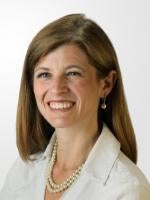On December 29, 2022, President Biden signed the Consolidated Appropriations Act, 2023, and Division T of the Act contains legislation dubbed the SECURE 2.0 Act of 2022 (SECURE 2.0). SECURE 2.0 contains an important provision regarding the eligibility of part-time employees to participate in an employer’s 401(k) plan or ERISA-governed 403(b) plan. The fundamental principle behind SECURE 2.0 is to make it easier for Americans to save for retirement, and this new provision will allow part-time workers who might previously have been excluded from participation to save for retirement just like their full-time counterparts.
Long-Time Part-Time Workers Are Eligible
The long-standing rule under ERISA Section 202 provides that an employee cannot be excluded from participation in a 401(k) plan beyond the later of the date the employee attains age 21 or completes one year of service. For this purpose, a year of service is defined as 1,000 hours of service during a 12-month period.
The SECURE Act (Setting Every Community Up for Retirement Enhancement) (enacted in 2019) provided that employees who perform 500 hours of service during three consecutive 12-month periods must also be permitted to participate in the employer’s 401(k) plan.
Section 125 of SECURE 2.0 requires that employees who work “two consecutive 12-month periods during each of which the employee has at least 500 hours of service” must be permitted to participate in the plan.
Special Considerations
Exclusions: This rule does not apply to employees covered by a collective bargaining agreement, nonresident aliens who receive no earned income, or certain students.
Eligibility Date: Once a part-time employee works the required hours for two consecutive years, the employee must be allowed to contribute to the plan by the earlier of the first day of the plan year after the date the employee satisfied the requirements or six months after the date the employee satisfied the requirements.
Counting Hours Tips: Start counting hours on the date the employee’s employment commenced. If the employee does not complete the required hours of service during the initial 12-month period of employment, employers can then use the first day of the plan year for hours counting purposes going forward.
Vesting Implications: ERISA’s vesting rules will correspondingly be updated by SECURE 2.0 to provide that employees who participate in the plan under this special rule shall be credited with a year of service for each year in which they perform 500 hours of service.
Matching Contributions: Employers do not have to make nonelective or matching contributions for employees who become eligible to participate in the plan under this special rule.
Nondiscrimination Testing: Employers may elect to exclude employees who become eligible to participate in the plan under this special rule for certain nondiscrimination testing purposes.
Effective Date
This provision of SECURE 2.0 is effective for plan years beginning after December 31, 2024.
Consider these examples: ABC Company sponsors the ABC Company 401(k) Plan, which is a calendar year plan. Jim is an employee of ABC Company, and Jim has been working 600 hours per year since 2019. Julia was hired on June 1, 2022, and works 900 hours per year. When should Jim and Julia become eligible to participate in ABC Company’s 401(k) plan?
-
Under the SECURE Act, ABC Company should have tracked Jim’s hours beginning on January 1, 2021, and after working 600 hours in 2021, 2022, and 2023, Jim would be eligible to participate in the ABC Company 401(k) Plan on January 1, 2024.
-
Under SECURE 2.0, 12-month periods beginning before January 1, 2023, shall not be considered. Thus, if Julia works 900 hours in 2023 and 2024, she will become eligible to participate in the ABC Company 401(k) Plan on January 1, 2025.
Careful Administration is Key
Retirement saving plan eligibility for part-time employees is an area in which many employers inadvertently exclude eligible employees. As a result, the Internal Revenue Service has issued rules that govern correction where part-time employees are improperly excluded.




 />i
/>i

